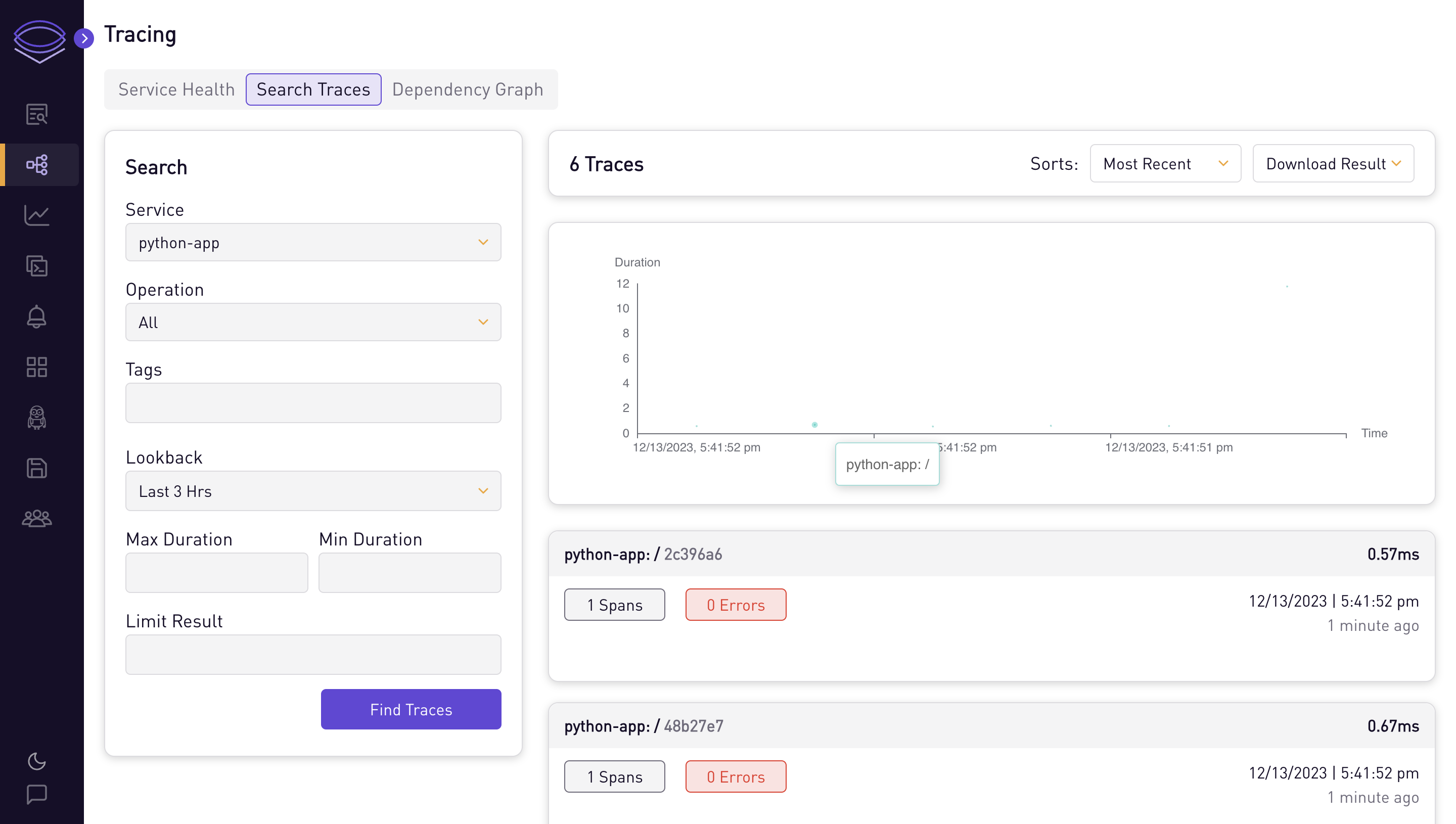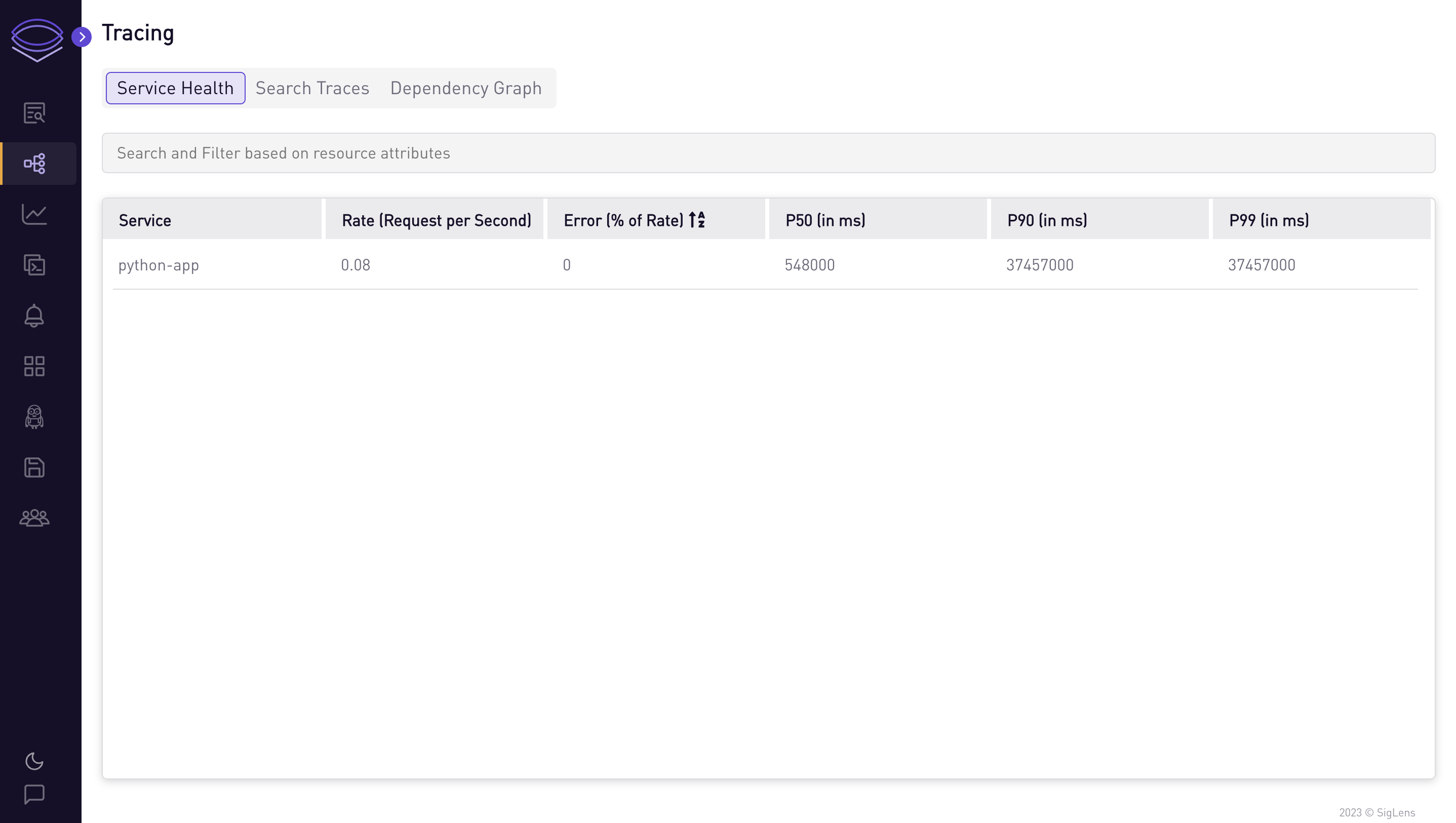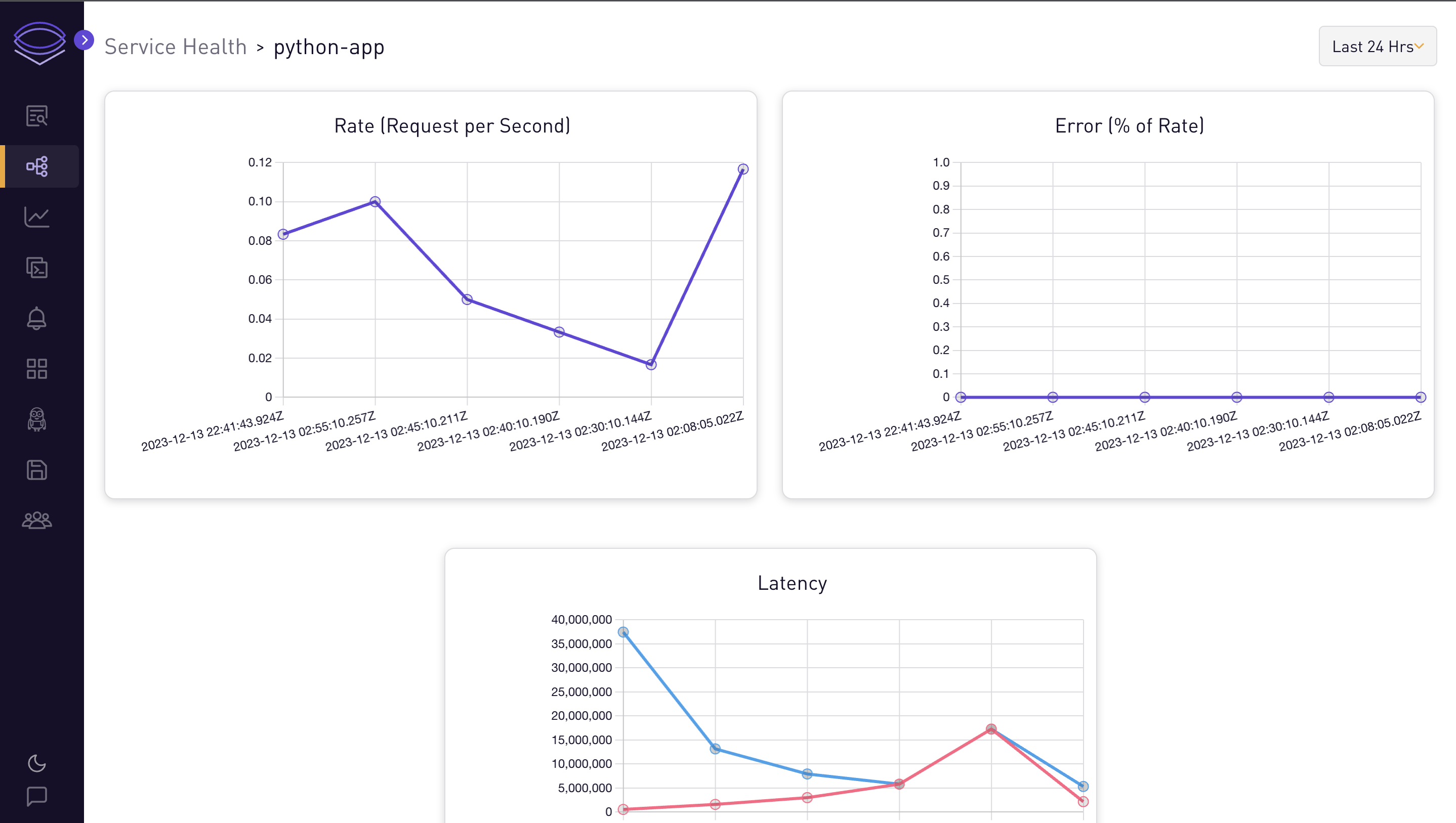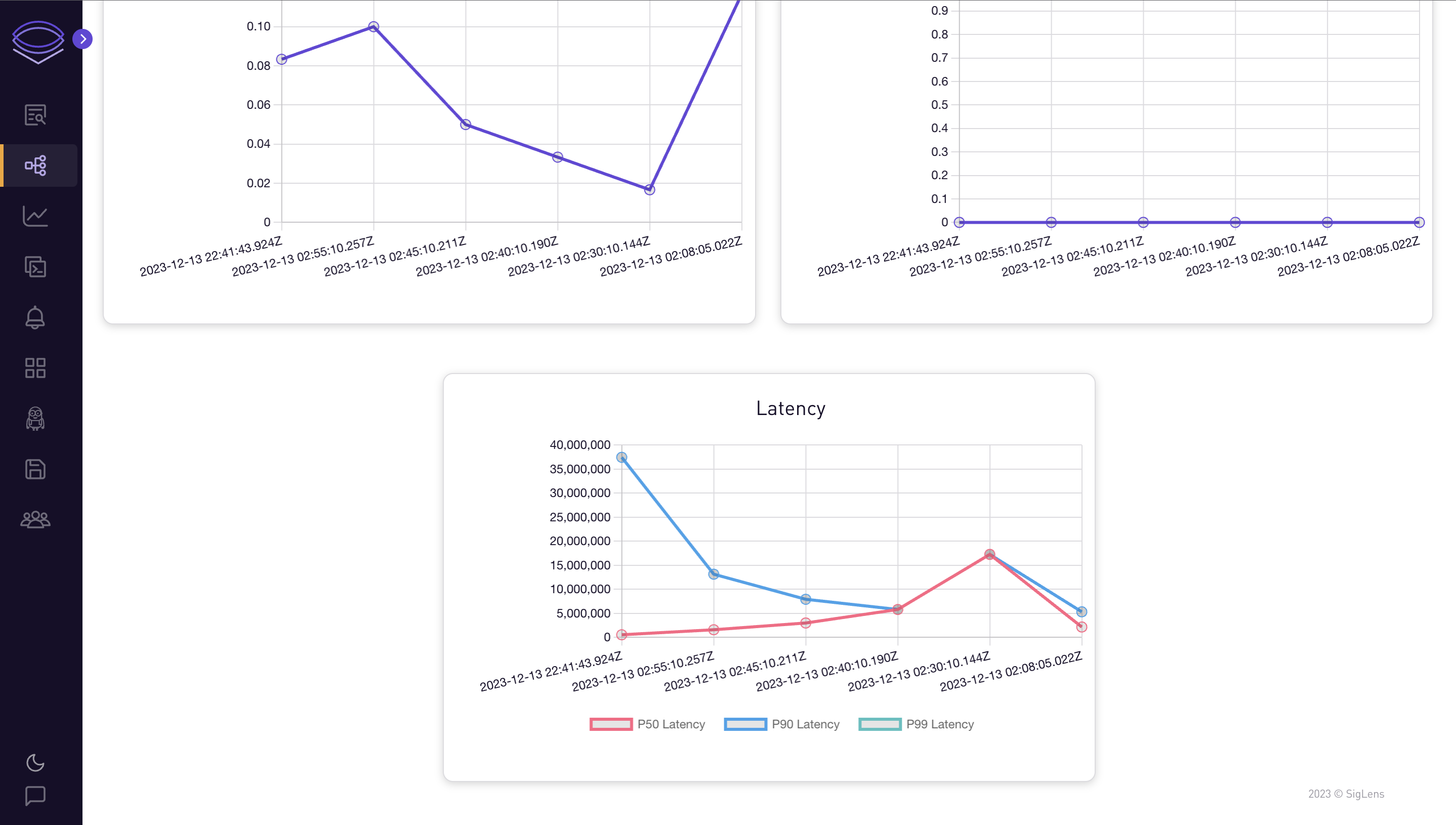Python App
Auto-instrument sample Python app for traces
In this tutorial, we will go through the steps to auto-instrument a Python app to send traces to SigLens. Follow along with the Django Quickstart or Flask Quickstart to quickly get an app sending traces to SigLens, then checkout More Details for more information on getting your existing app to send traces to SigLens.
Django Quickstart
Start SigLens:
curl -L https://siglens.com/install.sh | sh
Setup a simple Python app:
git clone https://github.com/docker/awesome-compose.git
cd awesome-compose/django/app
python3 -m venv django
source django/bin/activate
pip install -r requirements.txt
Install packages for OpenTelemetry Python development:
pip install opentelemetry-exporter-otlp-proto-http
pip install opentelemetry-distro
opentelemetry-bootstrap -a install
Install packages for OpenTelemetry Python development with Django:
pip install opentelemetry-instrumentation-django
Run with OpenTelemetry auto-instrumentation:
DJANGO_SETTINGS_MODULE=example.settings \
OTEL_LOGS_EXPORTER=none \
OTEL_METRICS_EXPORTER=none \
OTEL_EXPORTER_OTLP_ENDPOINT="http://localhost:8081/otlp" \
OTEL_EXPORTER_OTLP_PROTOCOL="http/protobuf" \
OTEL_SERVICE_NAME="my-service" \
opentelemetry-instrument python3 manage.py runserver --noreload
Go to the app at http://localhost:8000 and refresh the page a few times (you should see The install worked successfully! Congratulations!) to send traces to SigLens.
After about 10 seconds, you should see the traces on SigLens on http://localhost:5122 then going to Tracing -> Search Traces and clicking the Find Traces button.
Flask Quickstart
Start SigLens:
curl -L https://siglens.com/install.sh | sh
Setup a simple Python app:
git clone https://github.com/helloflask/flask-examples.git
cd flask-examples/hello
python3 -m venv flask
source flask/bin/activate
Install packages for OpenTelemetry Python development:
pip install opentelemetry-exporter-otlp-proto-http
pip install opentelemetry-distro
opentelemetry-bootstrap -a install
Install packages for OpenTelemetry Python development with Flask:
pip install 'flask<3' 'werkzeug<3'
pip install opentelemetry-instrumentation-flask
Run with OpenTelemetry auto-instrumentation:
OTEL_LOGS_EXPORTER=none \
OTEL_METRICS_EXPORTER=none \
OTEL_EXPORTER_OTLP_ENDPOINT="http://localhost:8081/otlp" \
OTEL_EXPORTER_OTLP_PROTOCOL="http/protobuf" \
OTEL_SERVICE_NAME="my-service" \
opentelemetry-instrument flask run -p 8080
Go to the app at http://localhost:8080 and refresh the page a few times (you should see Hello, World!) to send traces to SigLens.
After about 10 seconds, you should see the traces on SigLens on http://localhost:5122 then going to Tracing -> Search Traces and clicking the Find Traces button.
More Details
To auto-instrument your own Flask or Django app, you'll follow a similar procedure as in the relevant Quickstart.
For a Python app using a different framework the process will be largely the same, but instead of installing opentelemetry-instrumentation-flask you'll install opentelemetry-instrumentation-<package>.
Check out the OpenTelemetry Registry to find the appropriate package for instrumenting your Python app.
For Django specifically, you need to run the app with the --noreload flag, so something like python3 manage.py runserver --noreload. This lets OpenTelemetry properly instrument the app by disallowing Django from running main twice.
Once you're on the Tracing tab of SigLens, you can search the traces and see health metrics and graphs for each service.



